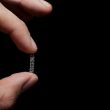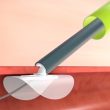We need more evidence to guide us in the management of silent ischemia. Confirmed asymptomatic coronary artery disease is a problem for cardiologists, who lack enough evidence to guide a risk-benefit assessment that justifies revascularization. Revascularizing the outcome of a functional assessment may reduce the rates of death and infarction, or it may just be<a href="https://solaci.org/en/2019/03/12/asymptomatic-coronary-artery-disease-silent-ischemia-a-cardiologists-headache/" title="Read more" >...</a>
Revascularization in Patients with Multivessel Disease, Diabetes, and Kidney Disease
According to this new study, in patients with coronary disease, diabetes, and chronic kidney disease who underwent revascularization through angioplasty or surgery, events are similar. This is one of the first studies painting the real picture for the prognosis of patients revascularized in these conditions (diabetes plus chronic kidney disease). At first sight, these<a href="https://solaci.org/en/2019/03/04/revascularization-in-patients-with-multivessel-disease-diabetes-and-kidney-disease/" title="Read more" >...</a>
The 10 Most Read Articles of January
1- These Were the Most Relevant Article of 2018 in the Field of Coronary Diseases Read the best articles on coronary heart disease from 2018 at solaci website. Read more 2- The 10 Commandments of ESC’s New STEMI Guidelines The authors have given an entertaining account of the most relevant points and differences between<a href="https://solaci.org/en/2019/02/15/the-10-most-read-articles-of-january/" title="Read more" >...</a>
The Most Relevant Articles of 2018 in Peripheral Vascular Disease
1- What’s New in the European Guidelines on Peripheral Arterial Disease Since the last version of the European guidelines on the diagnosis and treatment of peripheral arterial disease in 2011, there have been many trials and registries that warrant guideline adjustments in many aspects. The first novelty is the teamwork that gave way to these<a href="https://solaci.org/en/2019/02/04/the-most-relevant-articles-of-2018-in-peripheral-vascular-disease/" title="Read more" >...</a>
The Ten Commandments for the Fourth Universal Definition of Infarction
The Fourth Universal Definition of Myocardial Infarction is a document developed jointly by the European Society of Cardiology (ESC), the American College of Cardiology (ACC), the American Heart Association (AHA), and the World Heart Federation (WHF). The Fourth Definition was necessary for multiple reasons, including increasingly higher troponin sensitivity. While troponin obviously does not<a href="https://solaci.org/en/2019/01/30/the-ten-commandments-for-the-fourth-universal-definition-of-infarction/" title="Read more" >...</a>
Outcomes of Contemporary DES in Patients with Diabetes: Do They Render Freedom Obsolete?
Despite our high hopes for new-generation drug-eluting stents (DES), patients with diabetes still have a different prognosis, both clinical and angiographic, compared with non-diabetic patients. Authors sought to investigate the impact of diabetes on patients who underwent drug-eluting stent implantation in the BIONICS (BioNIR Ridaforolimus Eluting Coronary Stent System in Coronary Stenosis) trial. This<a href="https://solaci.org/en/2019/01/28/outcomes-of-contemporary-des-in-patients-with-diabetes-do-they-render-freedom-obsolete/" title="Read more" >...</a>
The Most Relevant Articles of 2018 in Pharmacology and Clinical Cardiology – Part 2
1- What Antiplatelet Therapy Should We Use in Patients with Stroke/TIA? Interesting Results for the POINT Trial The New England Journal of Medicine (NEJM) recently published an article about the POINT trial (simultaneously presented at the European Stroke Organisation Conference), a long-awaited randomized clinical trial to assess the efficacy and safety of dual antiplatelet therapy<a href="https://solaci.org/en/2019/01/25/the-most-relevant-articles-of-2018-in-pharmacology-and-clinical-cardiology-part-2/" title="Read more" >...</a>
The “Ten Commandments” of Myocardial Revascularization According to Europe
The new European guidelines on myocardial revascularization were developed by a joint effort of the European Society of Cardiology (ESC) and the European Association of Cardiovascular Surgery (EACTS). These guidelines are intended to support clinical practice with pragmatic recommendations based on currently available evidence and on personal experience, whenever evidence is missing. Both coronary angioplasty<a href="https://solaci.org/en/2019/01/24/the-ten-commandments-of-myocardial-revascularization-according-to-europe/" title="Read more" >...</a>
The Most Relevant Articles of 2018 in Pharmacology and Clinical Cardiology
1- New High Blood Pressure Guidelines The wait is finally over: the high blood pressure guidelines that have been in the works for the past 3 years saw the light of day at the American Heart Association (AHA) 2017 Scientific Sessions. Read more 2- New European Hypertension Guidelines Contrast with American Recommendations The European<a href="https://solaci.org/en/2019/01/21/the-most-relevant-articles-of-2018-in-pharmacology-and-clinical-cardiology/" title="Read more" >...</a>
Percutaneous Closure Systems Are Safe in TAVR and Aneurysms
Courtesy of Dr. Carlos Fava. Currently, one of our medical challenges is to conduct procedures requiring access with large introducer sheaths in a simpler way, without requiring surgical intervention and closing with percutaneous devices while maintaining procedural quality and safety. There are several devices, but they require a learning curve and the only information available comes<a href="https://solaci.org/en/2019/01/15/percutaneous-closure-systems-are-safe-in-tavr-and-aneurysms/" title="Read more" >...</a>









